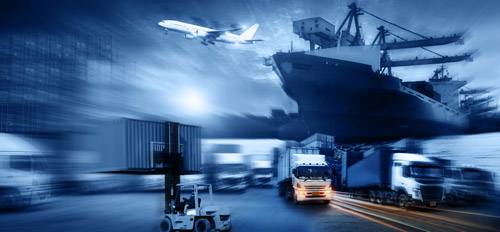
THE PROBLEM
"A lack of integration between real economy participants significantly impedes the growth of trade."
World leaders agree that increased trade is the key to achieve greater economic prosperity. Currently, trade is highly inefficient due to antiquated methods to manage the flow of shipments from shelf to shelf, including the lack of integration among trade participants. This significantly impedes the growth of trade.
According to the APEC Business Advisory Council, the average international trade transaction involves approximately 30 different parties with more than 40 different documents comprising 200 data elements.
Nearly 30 percent of these elements are repeated at least 30 times and 70 percent of all data is rekeyed at least once, resulting in numerous errors and costly delays in the movement of shipments.
The cost of providing paper-based documents for cross-border trade is a major expense to trade participants. Complex documentation is intimidating and can discourage many small firms from participating in cross-border trade. Manual information exchange also leads to a lack of visibility that prevents supply chain participants from proactively managing their resources in times of unforeseen events. In all, this results in higher costs, greater shipment and border crossing delays, and higher inventory-carrying costs.

THE SOLUTION
"Deploying MDDEAS to increase trade efficiency through maximizing logistics."
Commerce, finance, insurance and logistics are the four main pillars of trade. While logistics is the linchpin connecting the world, due to fragmentation and inefficiency it is also by far the weakest of these four pillars.
Therefore, we must learn from history while leveraging 21st-century tools. In 1956, the world witnessed the birth of the marine container. This simple idea revolutionized global trade, making it more secure and dramatically reduced the costs of trade.
Among other benefits, it reduced loading costs from USD 5.86 per ton to USD 0.16 per ton, a 36-fold saving that contributed to major trade growth, underwrote job creation and drove decades of real growth worldwide. The lesson learned is clear. In today’s digital era, we can apply new technology innovation to solve the lack of integration between real economy participants and reduce trade costs still further, thereby overcoming several challenges that are impeding the growth of trade. Today, the MDDEAS represents such innovation and presents to the world the 21st century equivalent of the marine container.
Furthermore, more efficient logistics will also enhance the efficiency of commerce, finance and insurance, and thus increase trade and boost the world economy.

THE BENEFITS
“Increased global trade by USD 3.7 trillion, provide a new USD 6 trillion service market opportunity and generate up to 310 million jobs”
Deploying MDDEAS will result in the following:
- Reduce global annual domestic and international trade costs by USD 4.9 trillion
- Increase annual global trade volume by USD 6.4 trillion
- Provide a new services-industry market opportunity of USD 20 trillion
- Generate an annual SME fund of USD 1 trillion to build SME capacity
- Create more than 400 million new manufacturing, agriculture & service industry jobs
- Maximized present logistics infrastructure efficiency
- Secure commerce and borders against terrorism
- Reduce carbon emissions
- Increase food security and food disease containment
- Expedite disaster relief response